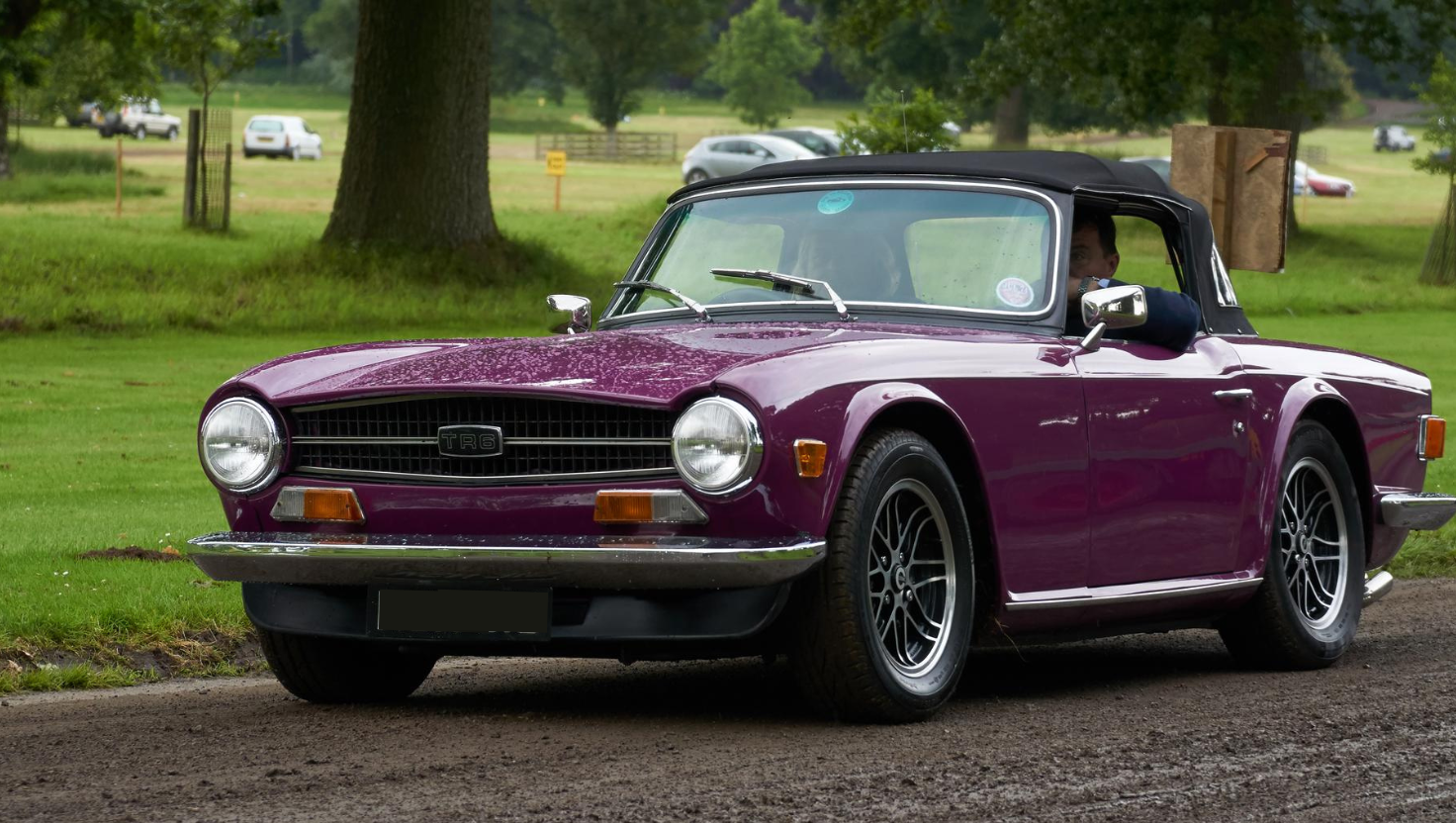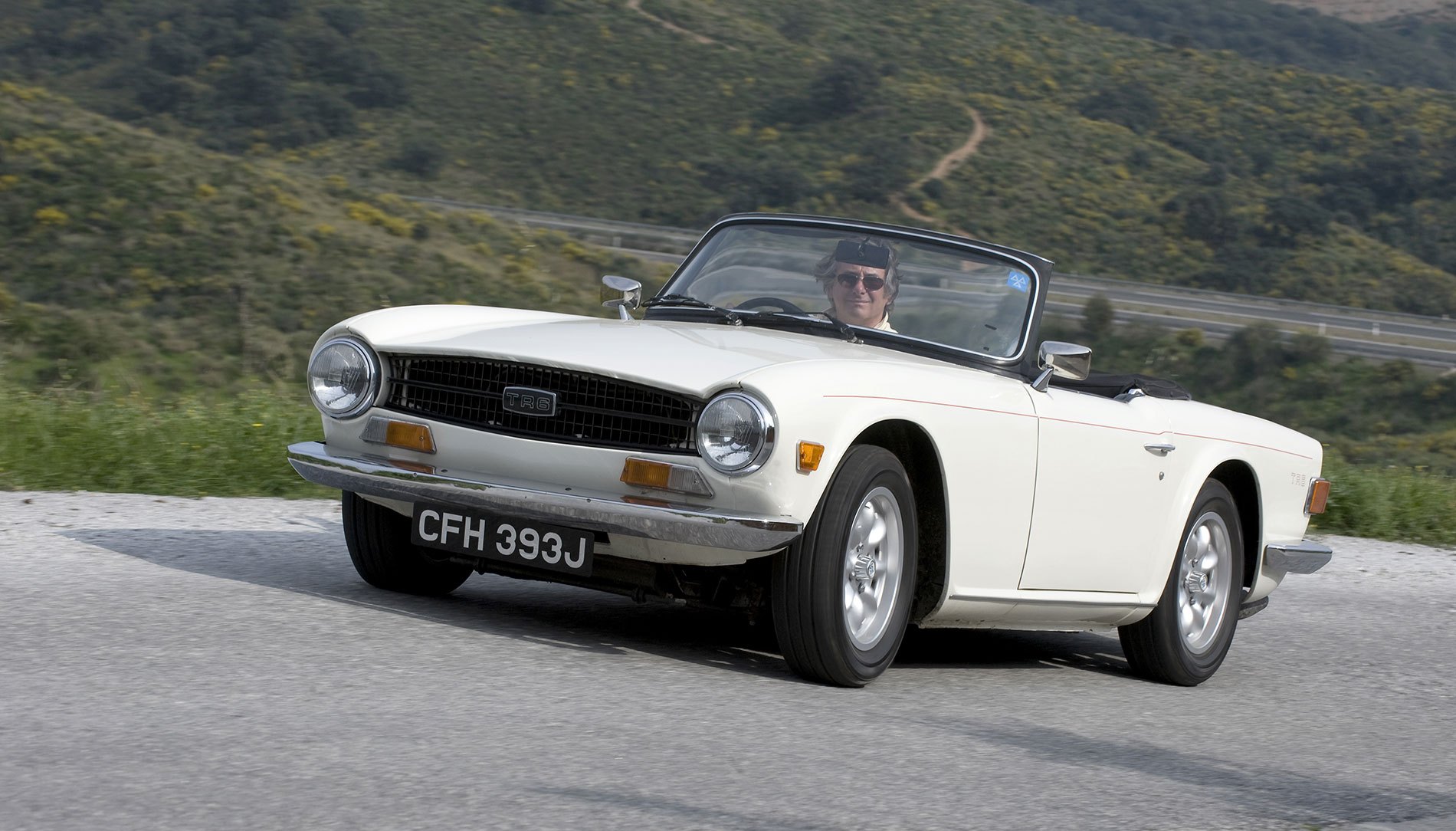
Essential Maintenance Tips for Your Classic Triumph
Important Disclaimer: Whilst we take every care to ensure that our website and information herein is as accurate as possible, errors and omissions are excepted. Please tell us if you think something is wrong.
Maintaining a classic Triumph is a labour of love. Each car, from the stylish curves of a Spitfire to the iconic take of a Stag, encapsulates the essence of British engineering, and having complete ownership of a classic Triumph is nothing short of prideful.
This guide is for Triumph car lovers and restoration experts who want to ensure their vehicle is drivable and maintains its timeless appeal.
Understanding your Triumph's needs
1. Rust prevention
Rust is the arch-nemesis of any classic car, and Triumphs are no exception. Models like the TR7 and Spitfire, with their exposed panels and seams, are particularly vulnerable.
- Inspect regularly: Check wheel arches, sills and under the bonnet for early signs of corrosion. A torch and a keen eye are your best tools here.
- Clean and dry: After driving in wet conditions, wash off road salt and grime, then dry the car thoroughly. Pay special attention to crevices where water can linger.
- Wax and underseal: Apply a quality wax to the bodywork and an underseal to the chassis. Products like Waxoyl offer excellent protection against moisture ingress.
Rust prevention is a cornerstone of Triumph car restoration. Catching it early can save you from extensive bodywork later on.
2. Engine care
The engine is the soul of your Triumph, whether it's the inline-six of a TR4 or the four-cylinder in a Herald. Regular attention keeps it purring.
- Oil changes: Use a high-quality 20W/50 oil suitable for older engines, and change it every 3,000 miles or annually, whichever comes first. Don't forget the filter.
- Cooling system: Triumphs, especially the Stag with its infamous V8, are prone to overheating. Flush the radiator every two years, use a 50/50 antifreeze mix, and check the hoses for cracks.
- Carburettor tuning: Models like the TR3 and Spitfire rely on SU or Stromberg carburettors. Listen for uneven idling or popping sounds, and adjust the mixture screws as needed. A Haynes manual is invaluable here.
For Triumph car maintenance, a well-tuned engine performs better and preserves the car's value.
3. Brakes and suspension: safety first
Your Triumph's brakes and suspension were designed for roads far less demanding than today's. Keeping them in shape is non-negotiable.
- Brake fluid: Check levels monthly and replace the fluid every two years. Old fluid absorbs water and reduces braking efficiency.
- Pads and shoes: Inspect wear annually. Triumph drum brakes, found on earlier models, need careful adjustment to avoid dragging.
- Bushings and shocks: Rubber bushings perish over time, causing a sloppy ride. Upgrade to polyurethane bushes for longevity and ensure shock absorbers are leak-free.
A smooth, safe ride is the reward for diligent Triumph car maintenance in this area.

4. Electrical system
Triumphs often came equipped with Lucas electrics, affectionately dubbed the 'Prince of Darkness' by enthusiasts. Flickering lights or a reluctant starter are familiar woes.
- Battery health: Check terminals for corrosion and ensure the battery holds charge. A trickle charger is a wise investment for cars stored over winter.
- Wiring checks: Look for frayed insulation or loose connections, especially under the dashboard. A multimeter helps diagnose faults.
- Earth points: Poor earthing is a common culprit. Clean and tighten all earth connections to the chassis.
Restoring a Triumph's electrics can feel daunting, but it's a rewarding part of Triumph car restoration that ensures reliability.
5. Bodywork and trim: preserving the aesthetic
The visual appeal of a Triumph is half the fun. From the chrome bumpers of a TR6 to the soft-top of a Spitfire, maintaining the bodywork is essential.
- Polishing: Use a gentle polish to protect paintwork, avoiding abrasive compounds that can damage original finishes.
- Chrome care: Clean chrome with a mild cleaner and apply a light wax to prevent pitting. For rusted spots, consider re-chroming - a worthwhile investment for restorers.
- Interior love: Leather or vinyl seats need conditioning to prevent cracking. Vacuum carpets regularly and treat dampness promptly to avoid mould.
For Triumph car restoration enthusiasts, a pristine exterior and interior enhance the car from a project to a showpiece.
6. Tyres and Wheels
Tyres on a classic Triumph need to balance authenticity with performance.
- Age check: Even with good tread, tyres over 10 years old should be replaced due to rubber degradation. Look for the DOT code on the sidewall.
- Pressure: Maintain the recommended PSI (usually around 26-30 for most Triumphs) to ensure even wear and handling.
- Wheel alignment: Misaligned wheels cause uneven tyre wear and poor steering. A professional alignment every few years keeps things spot-on.
Well-maintained wheels are a subtle but critical aspect of Triumph car maintenance.
7. Regular driving
A classic Triumph isn't meant to sit in a garage gathering dust. Regular driving keeps seals lubricated, prevents fuel system gumming and spots issues early. Aim for a short run every month, even in winter - avoid salted roads if possible. For longer storage, use a fuel stabiliser and disconnect the battery.
8. Sourcing parts: quality matters
When repairs or replacements are needed, quality parts make all the difference. At Rimmer Bros, we stock an extensive range of Triumph spares, from brake pads to body panels, all crafted to meet or exceed original specifications. Whether tackling a full Triumph car restoration or a quick fix, having the right components ensures authenticity and performance.
Tools of the trade
Every Triumph owner should have a basic toolkit: spanners (especially Whitworth sizes for older models), a socket set, screwdrivers, a torque wrench and a jack with axle stands. A workshop manual specific to your model is indispensable for detailed Triumph car maintenance.
The reward of maintenance
Maintaining a classic Triumph is more than just a chore; it's a connection to a bygone era of motoring. Each turn of a spanner or wipe of a cloth keeps the legacy alive. Whether you're cruising country lanes or displaying at a car show, a well-cared-for Triumph turns heads and warms hearts.
For Triumph car restoration enthusiasts, the process is even more rewarding. Bringing a neglected example back to life - polishing out scratches, coaxing an engine back to health or stitching a new hood - creates a bond with the car that's hard to replicate. For everyday maintenance, these tips ensure your Triumph remains a reliable companion rather than a garage queen.